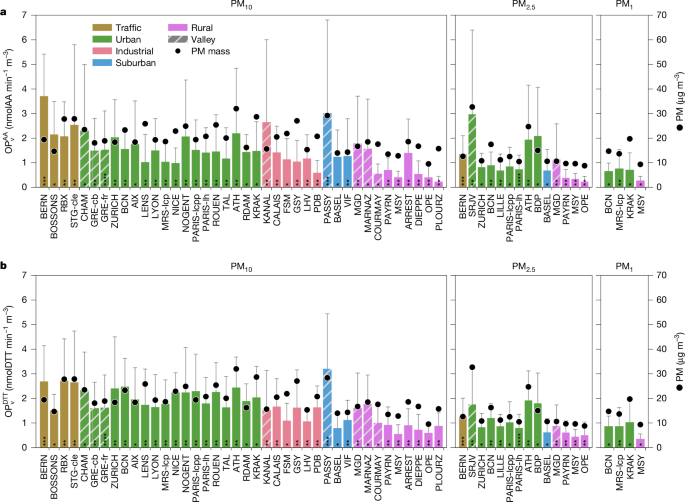
"Atmospheric particulate matter (PM) is a global concern for health impacts11. For this reason, present European regulations (Directive 2008/50/EC) have established limits for PM 2.5 and PM 10 in terms of mass concentration (subsequently referred to as PM mass). However, PM is a complex mixture with varying physicochemical properties (such as size, chemical composition, solubility and so on), which determine its health impact and are not well reflected only by PM mass8,12,13,14,15,16."
"Oxidative stress, characterized by an imbalance between the amount of reactive oxygen species (ROS) and the body's antioxidants17,18, and the resulting inflammatory response seem to be key biological mechanisms involved in PM-induced health damage8,16,19,20. In this context, oxidative potential (OP) is at present considered a promising indicator for air quality regulations, justifying and motivating its introduction as a recommended measurement in the new European Directive to be implemented by member states within the next 2 years (ref. 1)."
Atmospheric particulate matter mass concentration limits do not capture the varied physicochemical properties that determine health impacts. Oxidative potential (OP) quantifies the capacity of particles to generate reactive oxygen species (ROS) and represents an initial step toward understanding oxidative stress and inflammation from PM exposure. The dithiothreitol (DTT) assay is widely used to measure OP. OP can be expressed per air volume (OPv) to assess exposure or per particle mass (OPm) to indicate intrinsic redox activity. OP is regarded as a promising air quality indicator and is recommended for monitoring, while earlier studies suffered from small sample sizes and non-harmonized protocols.
Read at Nature
Unable to calculate read time
Collection
[
|
...
]